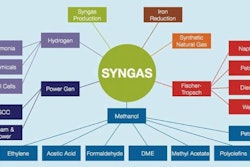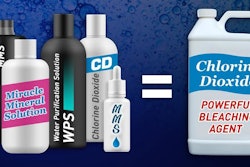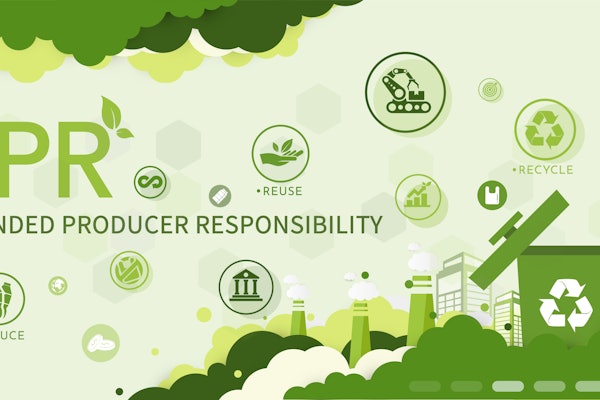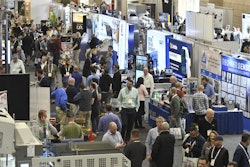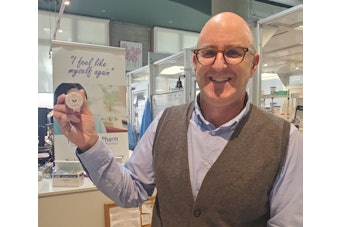Unplanned or unscheduled maintenance can cause serious injury to plant floor workers. When operators are rushed or attempting to minimize downtime, the results can have negative consequences. Plant management must have a task-based risk assessment system in place for unscheduled maintenance, according to Fred Hayes, PMMI’s risk assessment expert, and it must become part of the plant’s culture.
Every litigation case Hayes has worked on that involved a severe injury or death was by machine movement that was either unplanned or unexpected. “I had one case where an operator started a machine when another operator was clearly in it,” states Hayes. “To the person who went through a three-step startup process, it wasn’t unplanned. But to the person that was reaching into the machine clearing the jam, it was a totally unplanned and unexpected machine movement. When things move unexpectedly, people get hurt. That’s the bottom line.”
In this interview, Hayes discusses acceptable risk and the risk assessment process.
[Editor’s note: This article is geared toward safety in food plants, but the lessons on hazards and safety in maintenance—while protecting product safety as well—are important in preventing severe injuries in manufacturing operations of all types.]
PFW: Please define the basic safety terms used in a food plant environment.
Hayes: A target is something that we want to protect. A hazard is something that poses a threat of harm. Recognizing hazards is extremely important because, if you don’t identify the hazard, you can’t analyze it. A mishap or an accident is where some kind of a loss is incurred. A near miss is where there’s an incident, but there are no losses incurred. Reasonably foreseeable misuse is something that needs to be considered. It’s the kind of misuse that you would get from normal human expectations of what people do sometimes. However, it is not included as a deliberate abuse.
PFW: What should be protected in food plant environments?
Hayes: We want to protect people from injury, illness and health issues. When an employee comes to work, we expect them to go home whole. That’s fundamental. There are lots of things on equipment that protects the equipment from itself. We also want to protect product. When it comes to hygiene, food safety is extremely important. Productivity is critical. There’s a lot of equipment technology in terms of safety systems that can enhance productivity. It’s important to be able to make value judgements on those. Obviously, we also want to protect the environment.
PFW: How can hazards be identified?
Hayes: After a machine is installed, it’s going to run, be maintained and cleaned and set up for line changeover. It’s important to recognize that there are different hazards associated with each one of these tasks. This is the fundamental of the iterative process of risk assessment, as defined in ISO Guide 51, and it is included in ANSI/PMMI B155.1-2016 Standard for Processing and Packaging Machinery. The most important thing is to identify the hazards, and they must be identified before you can analyze them.
There are lots of ways to look at hazards. There are certain consensus standards on machinery that identify certain hazards associated with different machines. There are mechanical hazards, such as pinch points, run-in points, created by gears and chains. There are energy hazards, and stored energy created by an elevator on a palletizer. Then we have abnormal events, such as losing all plant power.
PFW: How can food plants address risk assessment?
Hayes: In the last 15 years, task-based risk assessment has been conducted in food and beverage plants. This is where you look at the work that someone does and identify and analyze the hazards that workers are exposed to. A task-based risk assessment allows you to find more hazards, and, in turn, analyze more hazards than any other method.
PFW: Please define risk and how it is scored.
Hayes: Risk is a function of severity of an injury and the probability of its occurrence. You can break probability down into greater detail. You can look at exposure. In other words, how often something occurs and how many people are exposed.
Severity of consequence is easy for most people to understand. A minor injury is first aid at the plant. A moderate injury is a trip to the doctor or hospital. A serious injury is permanent damage, such as an amputation. The last one is a trip to the morgue.
A simple 4 x 4 matrix is used to score risk (see image 2). When you are identifying the severity of the injury, it is not hard to score. Ideally, you should spend your time and resources reducing risk, not scoring risk.
Some risk can be accepted when we know it’s insignificantly low. The other time we accept risk is when we don’t know it’s there. That’s why it is crucial to identify the hazards in order to do the analysis.
PFW: How can risk be reduced?
Hayes: Machinery design changes can often eliminate risk. Engineered safety features and safety devices are often already in place on equipment and include interlocked door guards, light curtains, safety mats, start/stop buttons, horns and warning signs as well as procedures and training.
Lockout-tagout is an administrative control totally dependent on procedures. Training to ensure that staff makes the right choices and follows the procedures to do a correct lockout procedure is required. Whereas an interlocked door is an engineering control that is not dependent on the operator.
PFW: How do you conduct a risk assessment?
Hayes: Normally, you have a team that understands how to score and evaluate risk. Once the team understands the levels of severity, they look at hazards differently, and you’ll get a good result.
If you are going to lay out a new line, you must identify the process, kill step and packaging needs. By looking at these early in the process, your ability to implement change is unlimited and the cost of doing it is extremely low. As you get further down the pipeline and out on the plant floor, it becomes more expensive and your choices become limited.
PFW: Can you provide a real work scenario of an assessment problem?
Hayes: In one plant, there was a catwalk next to the open tanks you see on the left (see image 5). Down at the end, there are two more tanks, and the catwalk goes along the side of them. In the middle of those round tanks at the end, there are sensors that periodically must be maintained and checked. One tank is under an HVAC unit, and there’s no place to tie off. Here is a case where they put a catwalk in, but they didn’t provide a way for maintenance to be performed. They effectively created a hazard.
PFW: How can employees recognize hazards?
Hayes: Task-based risk assessment really helps in this case. The person doing the work or the people that are supervising the work can look at the potential hazards. By having some knowledge of what hazards are, employees will look at things differently and do a much better job of hazard identification. Consider the operation and maintenance tasks in the design phase if you can. In the catwalk example, the plant design team didn’t make a provision for how to safely perform maintenance on the tanks.
Learn more about machine safety and how to identify hazards at PACK EXPO Las Vegas from Sept. 23-25 at the Las Vegas Convention Center. Register by Aug. 30 to save 70 percent off the registration fee.
New webinar helps you keep employees out of harm’s way
Lean more about safety in a new webinar from PMMI’s OpX Leadership Network. Register now for “Increased Safety Awareness in Maintenance and Other Non-Routine Work” at www.opxleadershipnetwork.org. In this webinar, the OpX Leadership Network brings together industry experts from Land O’Lakes and PMMI to discuss the importance of safety planning. The webinar offers practical advice, real-world examples and best practices to help manufacturers keep employees safe during equipment downtime and other non-routine situations.




